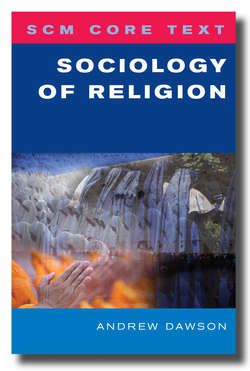Читать книгу SCM Core Text Sociology of Religion - Andrew Dawson - Страница 20
На сайте Литреса книга снята с продажи.
Theoretical variations
ОглавлениеTwo of the most prevailing, but contrasting, ways of conceptualizing society will suffice as examples. Traditionally, the most dominant way of conceptualizing society has concentrated upon the dynamics of social order and systemic integration. The French sociologist Émile Durkheim (1858–1917) is generally credited with establishing this model as a theoretical mainstay of the sociological tradition. Often using biological analogies, society is here viewed as an organism which, like other living things, functions best when its constituent parts work harmoniously together. In the same vein, as with any biological entity, society has needs which must be met if it is not only to survive but to flourish and ultimately evolve. Furthermore, just as a living organism has inbuilt mechanisms to adjust in times of change and heal itself in times of need, so too does society have a range of processes and mechanisms which enable it to correct temporary disorders and partial imbalances.
Known as ‘functionalism’ in its most influential manifestation, this way of conceptualizing society focuses upon the manner in which social cohesion is achieved through the harmonious integration of the various structures, institutions and individuals who make up the social world. At the same time, this approach concerns itself with the ways in which society both optimizes its functionality and maintains its integrative harmony. In respect of optimizing functionality, this is achieved, for example, by society evaluating its various components relative to their overall systemic importance. Consequently, while the most important (‘imperative’) features of society are promoted through their prioritization, others occupy subordinate positions and justify their existence in respect of the service they offer to the more significant elements of the social order. The maintenance of integrative harmony is undertaken in both a general and specific fashion. Generally, social integration is achieved through the propagation of norms, values and beliefs which underwrite the social system by way of, for example, rationalizing both its hierarchical structures and the differential distribution of roles, status and benefits which they entail. Specifically, integrative harmony may be ensured through the active correction of ‘dysfunctional’ components (criminals and other ‘deviant’ elements) through their punishment, censure and, where possible, rehabilitation.
In stark contrast to the conceptualization of society as an organic whole which functions best when its component parts work harmoniously together, conflict models of the social world offer a very different picture. Popularized by the German social-philosopher Karl Marx (1818–83) and developed by his theoretical descendants, conflict models assume a wide variety of conceptual forms and analytical concerns both within and outwith the Marxist tradition. Whereas functionalist thought, for example, sees the hierarchical ordering of society as a necessary and thereby unproblematic condition of its existence, conflict models regard social hierarchies with deep suspicion. This is the case because existing social hierarchies are seen as the outcome of historical struggles in which one or a number of parties have achieved dominance over others. Rather than serving the good of the whole, social hierarchies actually serve the interests of those dominant groups which, for multiple reasons, enjoy the greatest influence in respect of, for example, their distribution of symbolic and practical resources. In effect, then, the macro-structures, mid-range institutions and micro-social encounters which comprise society are not neutral components but actively serve the interests of some to the detriment of others.
Complementing this picture, conflict theories have particular interpretations of the ways in which society goes about integrating its members and maintaining social order. In respect of the norms, values and beliefs underwriting social integration, for example, conflict theories identify a range of processes which both ensure and rationalize the unequal integration of individuals within societal structures. While Marxist approaches have traditionally used the term ‘ideology’ to emphasize the biased nature of these processes – particularly, but not solely, as they relate to socio-economic categories such as class – other conflict approaches employ the concepts of patriarchy (feminist theory) and heterosexism (queer theory) (see Chapter 6). In the same vein, conflict models also identify a range of corrective practices and disciplinary regimes which serve to maintain social inequality through the labelling, admonition and punishment of those who transgress the roles and identities given to them. Consequently, while the likes of functionalist theory speak of necessary hierarchy, conflict theories speak of historically contingent inequality. Where functionalist theory identifies social integration achieved through shared norms and values, conflict theory sees exploitation and oppression maintained through the unequal distribution of power justified by ideologies of a sexist, racist and classist bent.
